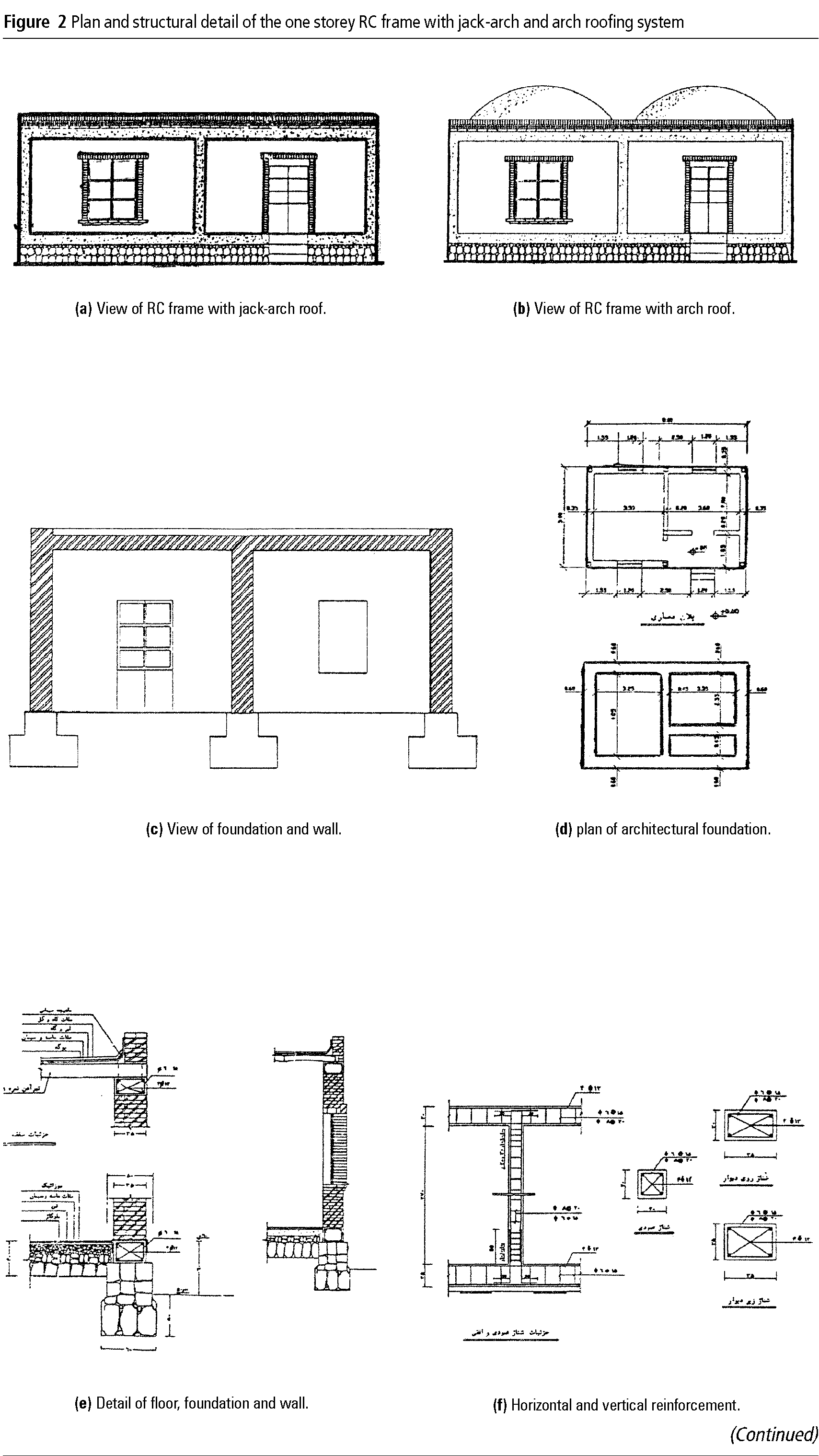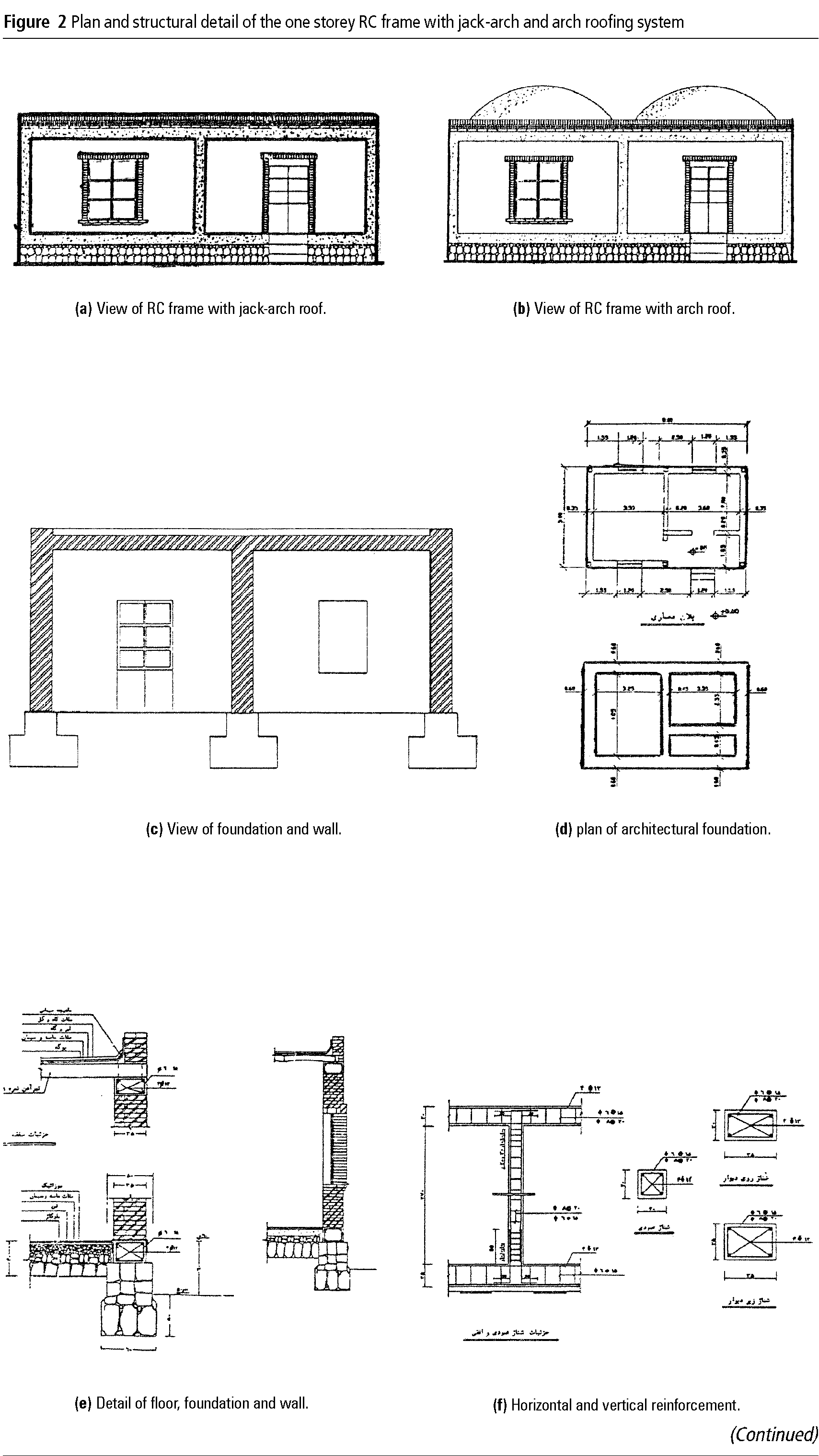
SEISMIC PERFORMANCE AND VULNERABILITY OF
 INDIAN CODE DESIGNED
INDIAN CODE DESIGNED
RC FRAME BUILDINGS
ISET Journal of Earthquake Technology, Paper No. 502, Vol. 46, No. 1, March 2009, pp. 29–45
Putul Haldar and Yogendra Singh
Department of Earthquake Engineering
Indian Institute of Technology Roorkee
Roorkee-247667
ABSTRACT
The current seismic design practice in India is based on the force-based design philosophy, with a partial incorporation of the capacity design concepts. In the present study, the adequacy of this philosophy and relative importance of various code provisions are examined by estimating the expected performance of a set of code-designed buildings, in deterministic as well as in probabilistic terms. The FEMA-440 and HAZUS methodologies are used for estimating the seismic performance and vulnerability.
It is shown that the Special Moment-Resisting Frame design under the current design provisions of Indian standards has a higher probability of damage, as compared with the Ordinary Moment-Resisting Frame design, because of the higher allowable ultimate drift limit. It is also shown that the deterministic framework of performance-based seismic design does not provide complete insight into the expected performance and associated risks of the designed buildings.Jiya Lage Na-SaHaStRa The Band Official song
KEYWORDS: Force-Based Design, Pushover Analysis, Seismic Performance, Vulnerability, RC Frame Buildings
REFERENCES
1. ACI (2008). “Building Code Requirements for Structural Concrete (ACI 318M-08) and
Commentary”, ACI Standard, American Concrete Institute, Farmington Hills, U.S.A.
2. ASCE (2006). “ASCE/SEI 7-05: Minimum Design Loads for Buildings and Other Structures”, ASCE
Standard, American Society of Civil Engineers, Reston, U.S.A.
3. ASCE (2007). “ASCE/SEI 41-06: Seismic Rehabilitation of Existing Buildings”, ASCE Standard,
American Society of Civil Engineers, Reston, U.S.A.
4. BIS (1987a). “IS: 875 (Part 1)-1987—Indian Standard Code of Practice for Design Loads (Other than
Earthquake) for Buildings and Structures, Part 1: Dead Loads—Unit Weights of Building Materials
and Stored Materials (Second Revision)”, Bureau of Indian Standards, New Delhi.
5. BIS (1987b). “IS: 875 (Part 2)-1987—Indian Standard Code of Practice for Design Loads (Other than
Earthquake) for Buildings and Structures, Part 2: Imposed Loads (Second Revision)”, Bureau of
Indian Standards, New Delhi.
6. BIS (1993). “IS 13920: 1993—Indian Standard Ductile Detailing of Reinforced Concrete Structures
Subjected to Seismic Forces—Code of Practice”, Bureau of Indian Standards, New Delhi.
7. BIS (2000). “IS 456: 2000—Indian Standard Plain and Reinforced Concrete—Code of Practice
(Fourth Revision)”, Bureau of Indian Standards, New Delhi.
8. BIS (2002). “IS 1893 (Part 1): 2002—Indian Standard Criteria for Earthquake Resistant Design of
Structures, Part 1: General Provisions and Buildings (Fifth Revision)”, Bureau of Indian Standards,
New Delhi.
9. BSI (2004). “BS EN 1998-1:2004—Eurocode 8: Design of Structures for Earthquake Resistance,
Part 1: General Rules, Seismic Actions and Rules for Buildings”, British Standards Institution,
London, U.K.
10. Calvi, G.M., Pinho, R., Magenes, G., Bommer, J.J., Restrepo-Vélez, L.F. and Crowley, H. (2006).
“Development of Seismic Vulnerability Assessment Methodologies over the Past 30 Years”, ISET
Journal of Earthquake Technology, Vol. 43, No. 3, pp. 75–104.
11. Chopra, A.K. and Goel, R.K. (2002). “A Modal Pushover Analysis Procedure for Estimating Seismic
Demands for Buildings”, Earthquake Engineering & Structural Dynamics, Vol. 31, No. 3, pp. 561–
582.
12. CSI (2006). “SAP2000: Integrated Software for Structural Analysis & Design, Version 10.0.5—
Analysis Reference Manual”, Computers and Structures, Inc., Berkeley, U.S.A.
13. FEMA (2000). “Prestandard and Commentary for the Seismic Rehabilitation of Buildings”, Report
FEMA 356, Federal Emergency Management Agency, Washington, DC, U.S.A.
14. FEMA (2005). “Improvement of Nonlinear Static Seismic Analysis Procedures”, Report FEMA 440,
Federal Emergency Management Agency, Washington, DC, U.S.A.
15. ICC (2006). “International Building Code”, International Code Council, Washington, DC, U.S.A.
16. Kappos, A.J., Panagopoulos, G., Panagiotopoulos, C. and Penelis, G. (2006). “A Hybrid Method for
the Vulnerability Assessment of R/C and URM Buildings”, Bulletin of Earthquake Engineering,
Vol. 4, No. 4, pp. 391–413.
17. NIBS (1999). “Earthquake Loss Estimation Methodology HAZUS: Technical Manual”, Report
Prepared for the Federal Emergency Management Agency, National Institute of Building Sciences,
Washington, DC, U.S.A.
18. NIBS (2003). “Multi-hazard Loss Estimation Methodology, Earthquake Model—HAZUS-MH:
Technical Manual”, Report Prepared for the Federal Emergency Management Agency, National
Institute of Building Sciences, Washington, DC, U.S.A.
19. Park, R. and Paulay, T. (1975). “Reinforced Concrete Structures”, John Wiley & Sons, Inc., New
York, U.S.A.
20. Priestley, M.J.N. (1993). “Myths and Fallacies in Earthquake Engineering—Conflicts between
Design and Reality”, Bulletin of the New Zealand Society for Earthquake Engineering, Vol. 26,
No. 3, pp. 329–341.
21. Priestley, M.J.N. (2000). “Performance Based Seismic Design”, Proceedings of the 12th World
Conference on Earthquake Engineering, Auckland, New Zealand, Paper No. 2831 (on CD).
22. Priestley, M.J.N. (2003). “Myths and Fallacies in Earthquake Engineering, Revisited: The Mallet
Milne Lecture, 2003”, IUSS Press, Pavia, Italy.
23. Priestley, M.J.N., Calvi, G.M. and Kowalsky, M.J. (2007). “Displacement-Based Seismic Design of
Structures”, IUSS Press, Pavia, Italy.
24. Qi, X. and Moehle, J.P. (1991). “Displacement Design Approach for Reinforced Concrete Structures
Subjected to Earthquakes”, Report UCB/EERC-91/02, University of California, Berkeley, U.S.A.
